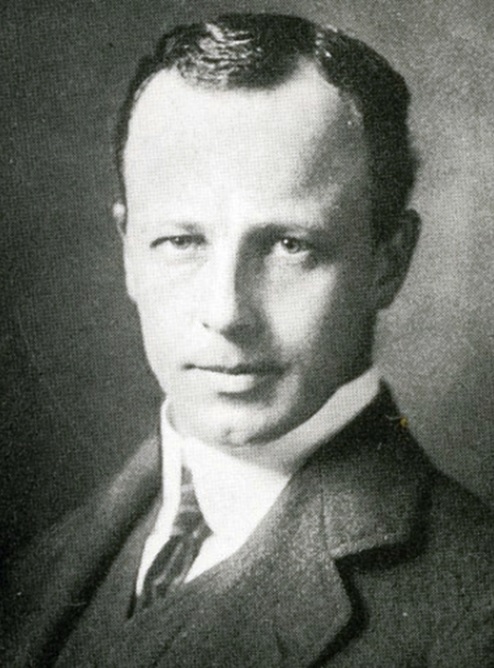
| Roles | Referee |
|---|---|
| Sex | Male |
| Full name | Torben Andreas•Grut |
| Used name | Torben•Grut |
| Born | 2 June 1871 in Tun, Västra Götaland (SWE) |
| Died | 24 December 1945 (aged 74 years 6 months 22 days) in Frederiksberg, Hovedstaden (DEN) |
| NOC |  Sweden Sweden |
Torben Grut studied at the Technical University in Stockholm from 1890-94, then at the Academy of Arts in København, and finally at the Stockholm Academy of Arts, where he received the Royal Medal for Architecture in 1898. In addition to architecture, he also attended courses in etching and painting. In the following years, he worked as an assistant to various architects in Sweden and Denmark and as a project manager for the construction of the Central Post Office in Stockholm.
After traveling to Paris and London, he settled in Stockholm as an independent architect in 1902. As editor of the technical magazine “Arkitektur och dekorativ konst” (Architecture and Decorative Arts), he advocated a renewal of architecture based on materials and craftsmanship. From 1906 he worked as an architect at the Supreme Building Authority (“Byggnadsstyrelsen”) and as a teacher at the Academy of Arts. In 1924 he was appointed castle architect of Ulriksdal in Solna and two years later a member of the Academy of Arts. He spent the last years of his life in Denmark.
Grut was theoretically and artistically one of the most important architects of Swedish National Romanticism. He showed a special interest in historical Nordic brick architecture but always strived to try out new directions. To realize his ideas, he drew on both national and regional building traditions but also drew inspiration from the English Arts and Crafts movement. He designed sports facilities and baths, banks and factories, churches and community centers, residential buildings, and villas, as well as exhibition pavilions, and was even active in bridge building.
Grut’s proposal for an Arts and Crafts Museum in Gothenburg (1901), with its brick and freestone façade, was style-defining. The project formed the basis of a national school of architecture in Sweden but was not realized because of the estimated high costs. Also significant was the first design for Villa Småryd in Båstad (1903) with a mixture of Art Nouveau and English cottage styles. The main work of this creative phase is the stadium in Stockholm (1910-12), designed for the 1912 Olympic Games. The stadium is considered one of the most important works of Swedish National Romanticism. The sculptural decoration was designed by Carl Eldh. Subsequently, Grut became a pioneer of wooden sports facilities, especially indoor tennis courts. He was the Swedish tennis champion in 1896-97.
After 1920, he began to look increasingly towards the Swedish classicism of the 1920s. His designs now generally showed a light, elegant design. His later churches, such as the one in Morjärv (1928-29), also had a partly abstract-classicist character. As an etcher, Grut excelled primarily with figure motifs. His son Wille was the Olympic champion in Modern Pentathlon in 1948.
| Games | Sport (Discipline) / Event | NOC / Team | Phase | Unit | Role | As | |
|---|---|---|---|---|---|---|---|
| 1928 Summer Olympics | Art Competitions |  SWE SWE |
Torben Grut | ||||
| Architecture, Designs For Town Planning, Open (Olympic) | Final Standings | Judge | |||||
| Architecture, Architectural Designs, Open (Olympic) | Final Standings | Judge |